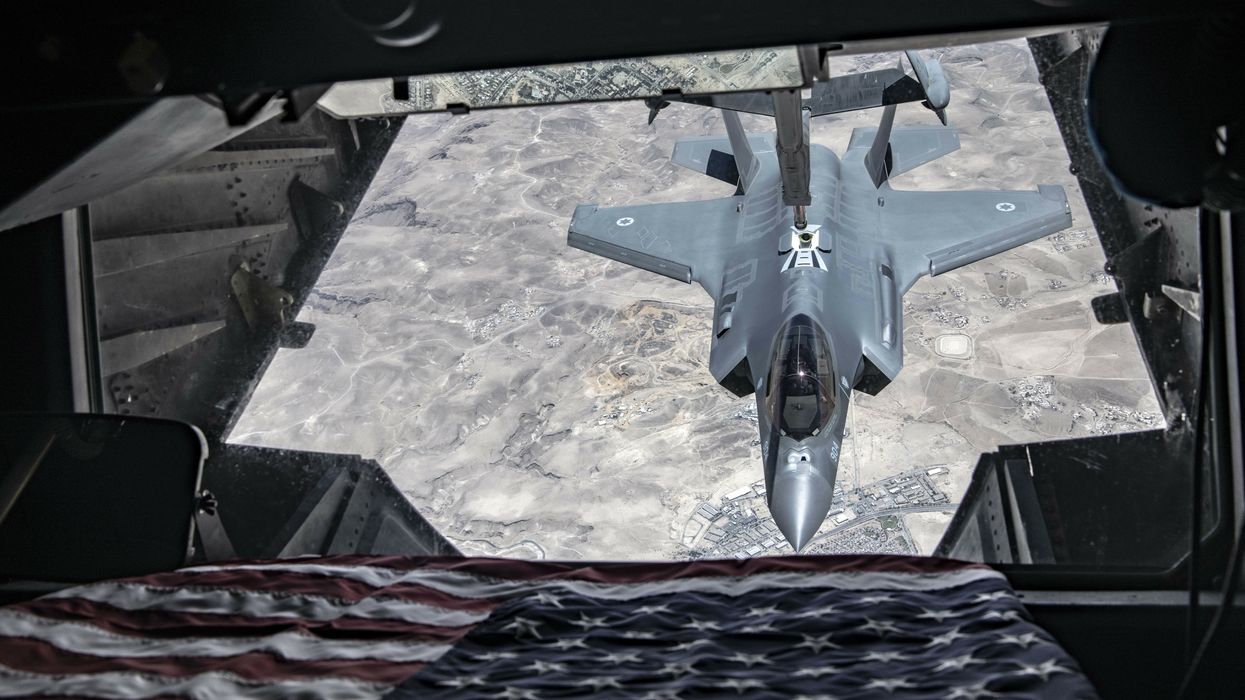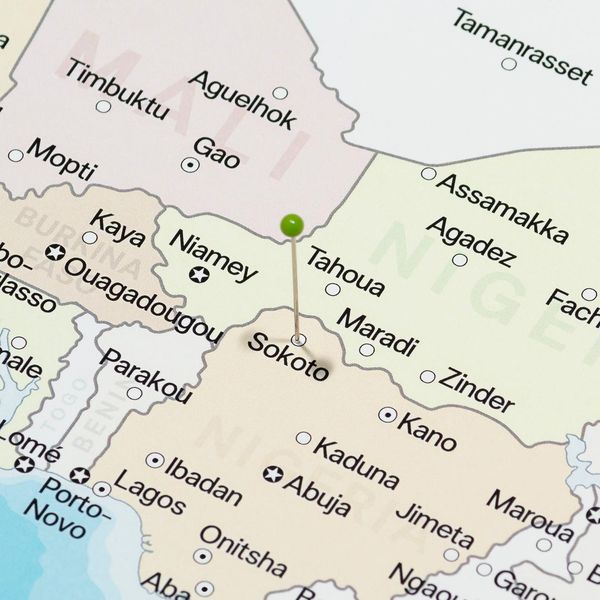Pentagon officials were quick to blame Iran for the March 11 attack that killed three service members —two American and one British — and injured 14 others in Iraq’s Camp Taji military base, which has once again brought us to another round of confrontation with Iran.
The U.S. responded on Friday with airstrikes on several sites associated with the Iranian-backed Iraqi militia Kataib Hizbollah, killing three soldiers, two Iraqi police, and an Iraqi civilian. (Although the U.S. has denied it, it’s likely that American forces also attacked an Iranian-backed militia on March 12 in Syria, killing 26 fighters.) But regardless of responsibility for the Syria strike, the recent spate of violence demonstrates once again that endless war isn’t just confined to Afghanistan.
On January 5, the Iraqi parliament voted to demand that U.S. troops leave Iraq. Iraq’s caretaker prime minister, Adel Abdul-Mahdi communicated his government’s wish for U.S. withdrawal in a phone call with Secretary of State Mike Pompeo on January 9 and deliberately disclosed this request in a publicized readout from the meeting.
The Trump administration, however, has refused, meaning that in effect the U.S. is resuming its role as an unlawful occupying force in Iraq.
When questioned about the Iraqi government’s demand for U.S. troops to withdraw from Iraq, Trump administration officials dismissed parliament’s vote as non-binding, questioned the authority of a caretaker prime minister and disputed what the prime minister said in the meeting.
Trump also threatened to punish Iraq with severe sanctions – “sanctions like they’ve never seen before, ever. It’ll make Iranian sanctions look somewhat tame” – and a massive bill for what the U.S. spent to fix up an airbase. But since neither the parliament nor the prime minister canceled their demand that U.S. troops leave, they effectively rescinded permission for U.S. troops to remain.
It’s important to note that the Iraqi government granted the U.S. permission to base troops in Iraq for the sole purpose of participating in the global anti-ISIS coalition. It was a sensitive and controversial decision given persistent popular repulsion at the thought of returning American forces, but the government felt that with its survival at stake, it had no other choice.
The Iraqi government was careful not to allow the U.S. to open its own bases; Americans remain housed in Iraqi bases, and there is there is no status of forces or basing agreement between Iraq and the US. Rather, there’s a bilateral letter that requires U.S. forces to leave within one year of a request from the Iraqi government.
While the U.S. has never had much respect for Iraq’s sovereignty, the Trump administration has gone further to rub the Iraqi government’s nose in its unwanted presence in the country and its belligerent conduct on the ground.
In December 2018, President Trump arrived at the Al-Asad Iraqi airbase to visit U.S. troops stationed there, even though Iraqi officials warned that his presence on an Iraqi airbase would be perceived as an insult to Iraqi sovereignty. Prime Minister Abdul-Mahdi refused to meet with him.
Yet most commentators here in the U.S. debated only whether Trump had legal authority to assassinate “bad guy” General Qassem Solaimani (and nine other Iraqis and Iranians) at the Baghdad airport, and whether this would have any measurable effect on the conduct of Iran’s military in the region. Almost no one focused on the fact that the assassination was an act of war by the U.S. against Iran carried out in breach of Iraqi sovereignty, and in violation of the understanding that the U.S. would ask the Iraqi government for consent before carrying out any attacks.
Just this week, Marine General Kenneth McKenzie, head of U.S. Central Command, told the House Armed Services Committee that the Pentagon was "in the process of bringing air defense systems, ballistic missile defense systems, into Iraq in particular, to protect ourselves against another potential Iranian attack." Yet, Iraq’s prime minister had declined to give permission for such weapons, explicitly telling Defense Secretary Mark Esper that bringing in Patriot missiles would signal that America had no intention of leaving and inflaming tensions with Iran and local militias. Iraqi sources insist that this is far from settled and still in negotiation.
The Trump administration doesn’t even pretend any more that its mission in Iraq is to fight ISIS. Instead, both Trump and his administration officials have openly declared that they are there “to keep an eye on Iran” and to “curb Iranian influence in Iraq.”
Little consideration is given to the fact that it’s the very presence of U.S. troops that are destabilizing and dangerous for: the Iraqi government in that it advertises its impotence to defend Iraqi sovereignty from American occupiers; the Iraqi people, who bear the brunt of a proxy war between the U.S. and Iran being fought in their country; and American soldiers, who come under attack and pay with their lives for a mission that has no political or legal legitimacy.
When Members of Congress grilled the Pentagon about this week’s fatal attack on U.S. soldiers in Iraq, they wanted only to know why defensive missiles weren’t there already, with, apparently, nary a question about their dubious reasons for being there and needing protection in the first place.
Some commentators have noted the importance of the role U.S. forces continue to play in Iraq “training and assisting” Iraqi forces to ensure they can repel newly emerging terrorist threats as a last remaining justification for the “as long as needed” presence of U.S. troops in the country. That, of course, should be up to the Iraqi government to decide.
But it’s problematic for the U.S. to have any role training and assisting Iraqi forces in anything, given the Iraqi military’s conduct in, at worst, killing and attacking civilians, or at best, failing to protect, Iraqi demonstrators in recent nationwide protests. Iraqi security forces and government-authorized Popular Mobilization Forces have killed more than 600 protesters since the backlash erupted in October; and many hundreds remain arrested for participating in protests, while others have faced torture, kidnapping and disappearance. It’s also telling that while the State Department regularly laments the plight of Iranian protesters as a reminder of the Iranian government’s viciousness, it has blamed only “militias” for the violence against protesters in Iraq, ignoring the role of Iraqi security forces “trained and assisted” by the U.S. and the reality that these militias have been formally inducted into, are under the authority of, and paid for by, Iraq’s ministry of defense.
We can expect with near certainty that armed insurrection of some form or another will continue in Iraq, given the brutality of Iraqi and Kurdistan Regional Government security forces in their battle against ISIS. In many cases, their tactics rival those of ISIS: thousands of homes razed and tens of thousands of ISIS suspects sentenced to death in shoddy trials, with torture, kidnappings, and executions a daily reality. Just this week, armed men murdered an Iraqi activist and actor, Abdulqudus Qasima, and his colleague, Karar Adel, a human rights lawyer, who were both vocal supporters of the protest movement. After more than 15 years of training and assisting Iraqi security forces, their epic unprofessionalism, lawlessness and impunity persist.
It’s good that the Trump administration has finally recognized that U.S. troops remaining in Afghanistan served neither the Afghan people nor U.S. interests. Now it’s time for the Trump administration to reach the same conclusion in Iraq, where its presence is not desired, lawful or helpful.
















